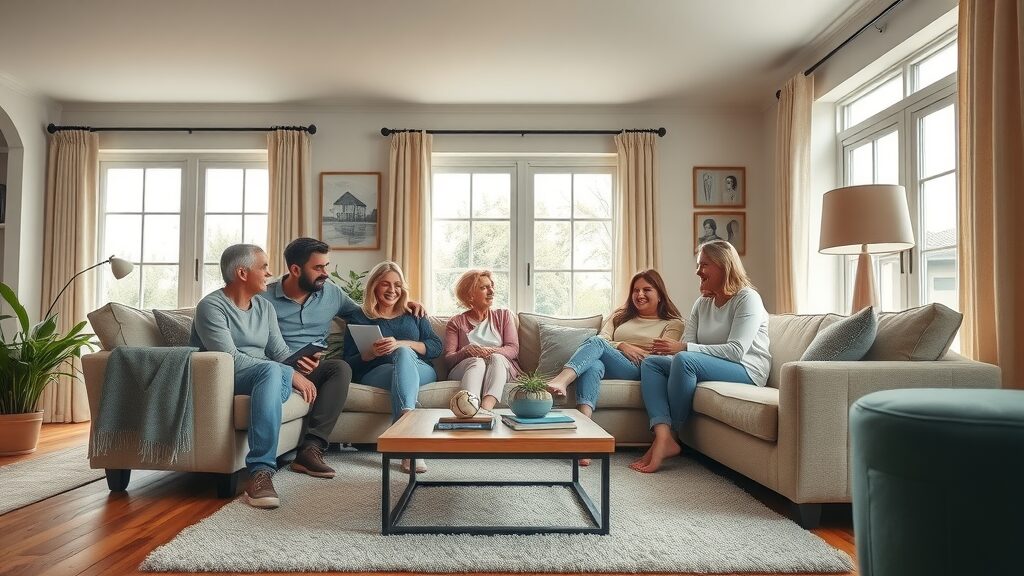
Is choosing between carpet and hardwood floors really as straightforward as it seems? Can your flooring decision change not just the look of your home, but its value, comfort, and even your allergies? Whether you’re seeking warmth underfoot or a surface that’s easy to clean, the carpet vs hardwood flooring debate is more than a matter of taste—it’s about lifestyle, health, investment, and the heart of your home. Dive in as we reveal which flooring option truly delivers what modern homeowners need.
- Discover the key differences between carpet and hardwood, from comfort and durability to resale value and allergens.
- Understand how to match floors with your lifestyle: pet owners, allergy sufferers, families, and design lovers each have unique needs.
- See real-world side-by-side comparisons so you can confidently plan your next home improvement project.
Is Carpet vs Hardwood Flooring Really a Simple Choice? Challenging the Expected
At first glance, deciding between carpet vs hardwood flooring might seem like a battle of preferences—warmth and softness underfoot versus elegance and easy cleaning. However, the reality is far more nuanced. Each flooring choice carries its own unique set of benefits and drawbacks affecting durability, upkeep, home value, and even the health of those living in your home. For many, the living room is the heart of daily activity, while bedrooms demand coziness. These spaces call for a careful balance between function and form, making your choice anything but simple.
Consider high-traffic areas: While dense carpet fibers cushion steps and dampen sound, carpet may struggle to withstand wear and stains from busy family life or pets. In contrast, hardwood flooring excels in foot traffic environments thanks to its long-lasting strength and the potential for refinishing over the years. Beyond durability, the emotional aspects—such as your personal comfort, design aspirations, and resale value—appear just as crucial. By delving into these layers, you can tailor your decision to match your unique home journey.
Unlock the Key Differences Between Carpet vs Hardwood Flooring
- Explore durability, upkeep, and comfort for both carpet and hardwood floor options
- Learn how wood flooring impacts your home’s resale value
- See how carpet and hardwood fare under heavy foot traffic
- Compare allergy considerations—hardwood flooring vs carpeted surfaces
- Discover which flooring is best for your living room, bedrooms, or high-traffic areas
Carpet vs Hardwood Flooring: Quick Comparison Table
| Feature | Carpet | Hardwood Flooring |
|---|---|---|
| Comfort | Soft, warm | Firm, cool |
| Durability | Prone to stains, wears over time | Long-lasting, can be refinished |
| Maintenance | Regular vacuuming, deep cleaning | Easy to clean, occasional polishing |
| Cost | Generally cheaper upfront | Higher initial investment |
| Resale Value | Neutral to slightly negative | Strongly positive |
| Allergen Control | Can trap allergens | Hypoallergenic |
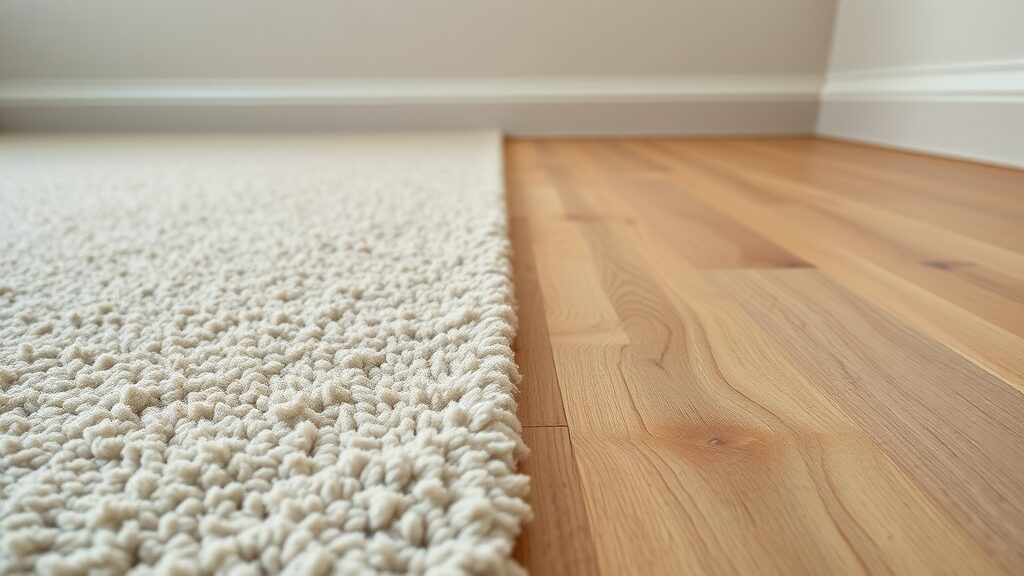
Understanding Carpet vs Hardwood Flooring: Essential Factors to Consider
Choosing the right flooring option isn’t just about appearance; it’s about how your family lives. Each material performs differently in response to foot traffic , cleaning needs, and day-to-day living. A room that buzzes with activity—like the living room , kitchen, or hallway—will need a durable surface that withstands daily wear. Bedrooms, meanwhile, might benefit from the plush, insulating qualities of carpet, especially if comfort and warmth are a top priority.
Cost and installation weigh heavily as well. While hardwood delivers timeless charm and can increase a home’s resale value, it comes with a higher initial cost than most carpets. Carpet, however, can be replaced inexpensively and quickly, though its lifespan may be shorter. The ongoing maintenance, sensitivity to stains, and ability to support healthy indoor air are crucial considerations—particularly for allergy sufferers . Understanding how each surface stands up to your expectations is the first step to making an investment you’ll celebrate for years to come.
Longevity and Durability: Which Lasts Longer—Carpet or Hardwood Floors?
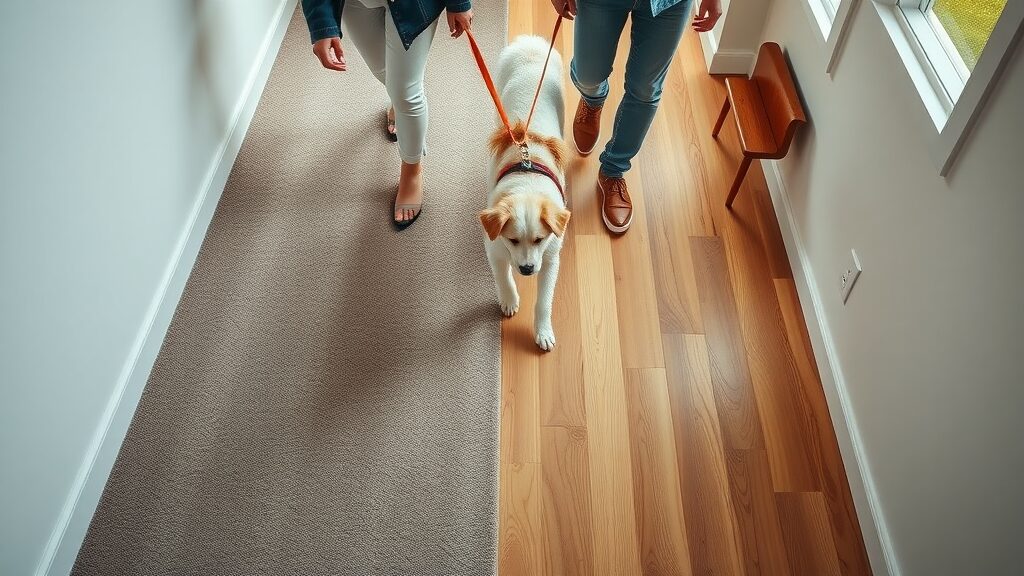
Durability is at the heart of the carpet vs hardwood flooring debate. A quality hardwood floor —whether solid or engineered hardwood —can last for decades, especially with periodic refinishing to restore its shine and address surface scratches. Heavy foot traffic may cause minor scuffs, but hardwood is designed to withstand years of activity, making it a smart choice for busy households. The ability to sand and refinish wood floors means you won’t need to replace them every time they show wear, adding significant long-term value.
In contrast, carpets, while soft and comfortable underfoot, tend to show wear more quickly. High-traffic zones like stairs, hallways, or living areas can develop matted or stained sections, and even with regular deep cleaning , most carpeting will need to be replaced after roughly 7-10 years. However, new innovations in synthetic fibers have improved carpet’s resilience, helping some carpets perform well in moderate foot traffic. For pet owners or families with young children, consider the trade-offs: carpet cushions falls and dampens noise but may need regular care to remain at its best.
Your lifestyle, family composition, and traffic patterns should greatly influence your decision. Hardwood is typically the go-to for those seeking longevity, while carpet still shines in spaces where softness, warmth, and noise reduction are the top concerns.
Maintenance Made Easy: Cleaning and Caring for Carpet and Hardwood
Maintenance can make or break a flooring decision. Hardwood flooring offers a relatively straightforward cleaning routine: a quick sweep or vacuum removes dust and dirt, while spills are easily wiped away from the hard surface before they can cause damage. Occasional polishing revives its shine and maintains protection. Compared to carpet, hardwood requires less frequent but more specialized care, such as refinishing every decade or so to erase scratches and restore its beauty.
Carpet cleaning is more involved. It requires regular vacuuming to lift dirt and debris from the fibers, and periodic deep cleaning to extract embedded dust, pet dander, and allergens. Stain removal can be tricky, especially for lighter-toned or plush carpets, and annual or semi-annual professional cleaning is recommended for optimal health. As a result, households with allergy sufferers often prefer hardwood, which doesn’t trap allergens like dust mites or pollen the way carpeted floors can.
Both flooring options can be made to look beautiful with consistent care. For homes with pets or children, area rugs can balance the pros of both: enjoying an easy to clean wood floor with the added comfort and warmth of smaller, replaceable carpets in high-use spaces.
Comfort and Lifestyle: Living Room and Bedroom Flooring Options
“Choosing between carpet vs hardwood flooring is about balancing comfort with value—your lifestyle and long-term plans should guide your decision.” – Hometown Floors Expert
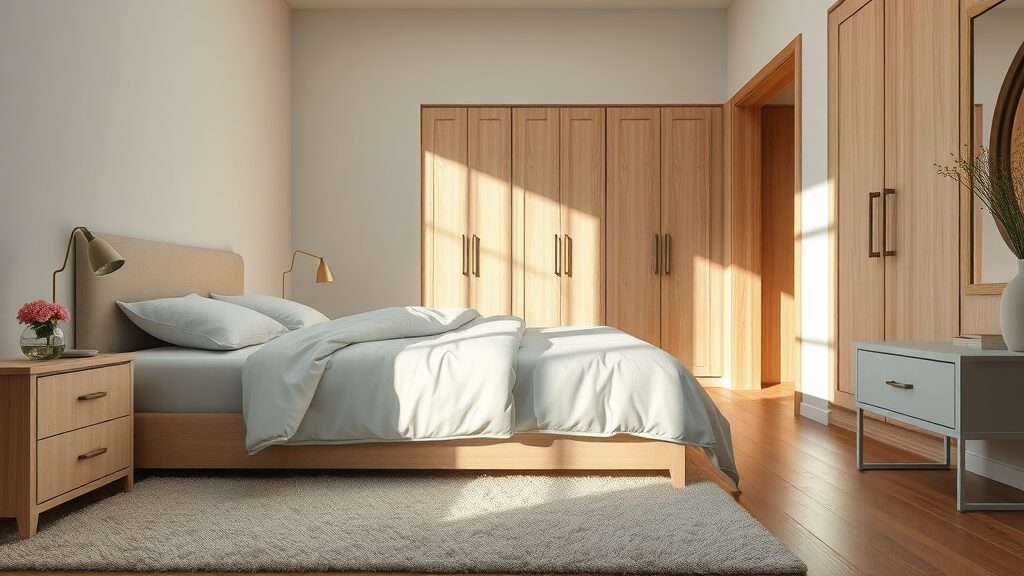
When it comes to comfort, carpet excels—especially in the bedroom or any area where you want a soft, inviting surface. Stepping onto plush carpet first thing in the morning is hard to beat, particularly in cooler climates where floors tend to feel chilly. Carpet also insulates against sound, making it a natural fit for kids’ rooms or multi-story homes where footfall noise is a concern. For those sensitive to temperature or who enjoy stretching out on the floor, this warmth is a major draw.
That said, nothing rivals the sophistication and versatility of hardwood flooring in living room and shared spaces. Hardwood brings visual flow and flexibility to any home, accommodating changes in decor or the layering of area rugs for extra coziness. It suits modern, classic, and transitional interiors, setting an elegant backdrop for every design style from rustic farmhouse to urban chic. If you love the look of natural materials and the way sunlight dances on polished wood grain, hardwood offers an unbeatable aesthetic.
The best solution might not be a binary choice. Many families opt for a combination of carpet and hardwood , placing wood in heavy-use areas while reserving carpet for comfort-focused spaces.
Wood Floor vs Carpet: Which Is Better for Home Value and Style?
Deciding between wood floors and carpet often comes down to two critical factors: how your investment impacts your property’s long-term value, and the atmosphere it creates in your space. Home buyers and real estate agents increasingly prefer hardwood flooring due to its broad appeal, timeless nature, and lasting durability. Meanwhile, carpet remains a top contender for those longing for a sense of warmth or looking for a budget-friendly update.
Modern wood flooring offers a palette of finishes, plank widths, and engineered wood products suitable for every taste and price point. Carpet, on the other hand, allows for playful textures and colors, and is easier to replace when redesigning a room or prepping a home for sale. Understanding how each option aligns with your goals ensures your remodeling dollars add genuine value and joy.
Hardwood Flooring and Resale Value: A Real Estate Perspective
Hardwood floors are a proven value-booster for home sellers. Many home buyers actively search for homes with wood floors in main spaces, viewing them as a premium upgrade. This preference reflects both durability and style—hard surfaces won’t go out of fashion, they’re hypoallergenic, and any scuffs or minor wear can be refinished rather than replaced. As a result, homes with hardwood flooring frequently sell faster and command higher offers than those with carpeted floors in key areas.
For those thinking of resale, investing in hardwood can be especially wise in living rooms, dining areas, and entryways—spaces that make a first impression for potential buyers. Meanwhile, carpet’s effect on resale value is more neutral, especially if it shows stains or appears outdated. While some buyers appreciate new carpet in bedrooms for its plush feel, a home with wall-to-wall carpeting in primary zones may require a discount at closing, or face longer lead times on the market.
The message from experienced real estate agents is clear: if budget allows, choose hardwood for the best blend of modern appeal, practical maintenance, and long-term value.
Visual Appeal: Does Carpet or Hardwood Set the Right Tone in Your Space?
Flooring is foundational to any interior design scheme. Hardwood floors instantly elevate a space, creating visual flow and a sense of openness—even in compact rooms. They provide a neutral, organic backdrop that pairs elegantly with nearly any color palette, decor trend, or furniture style. Sunlight plays beautifully across wood grain, and area rugs can be layered on top to soften the look and define seating or play zones.
Carpet, on the other hand, is unmatched for comfort, color, and pattern variety, allowing you to express personality and create a specific mood—whether you want a calm, minimalist bedroom retreat or a playful, busy family room. New styles with bold colors or subtle patterns can be particularly appealing to those who enjoy changing their home’s character without making a permanent commitment. If your taste evolves or you plan to update regularly, carpet gives you the flexibility to swap designs quickly and cost-effectively.
Many homeowners now combine both: hardwood for the main pathways, with statement carpets or area rugs to add comfort and color where it matters most. This hybrid approach can give every room its own tailored function and charm.
Flooring Options for Allergy Sufferers: Is Hardwood Flooring Better Than Carpet?

If you or a loved one is an allergy sufferer , the choice between carpet vs hardwood flooring can have real health implications. Carpets, especially older ones, tend to trap dust mites, pet dander, pollen, and other irritants—even with rigorous vacuuming or deep clean routines. By comparison, the smooth, hard surface of wood flooring makes it much easier to clean and less likely to harbor allergens, making hardwood an obvious choice in homes where asthma or respiratory sensitivities are a concern.
Advances in hypoallergenic carpets do exist—using synthetic fibers designed to resist moisture, reduce microbial growth, and allow for more effective cleaning. Still, carpet’s pile and structure inherently hold more dust and debris than hard surfaces, so diligent maintenance is key. For the best indoor air quality, especially in bedrooms or playrooms, wood flooring paired with easily washed area rugs is often recommended by health professionals.
How Hardwood Floors Improve Indoor Air Quality
Hardwood floors contribute directly to healthier indoor environments by limiting places for allergens to accumulate. Their sealed, non-porous surfaces do not trap pollen, pet dander, or dust mites in the same way carpets do. A simple sweep or vacuum removes most particles, and periodic damp mopping keeps surfaces spotless. Homeowners often notice a reduction in sneezing, asthma symptoms, or dust build-up—especially important for children, seniors, or anyone prone to allergies.
In addition, hardwood flooring resists mold and bacterial growth, as there is little opportunity for moisture to seep in and linger. This makes it suitable for living areas, hallways, or even modern kitchens where cleanliness and air quality matter. For anyone prioritizing a healthy, low-allergen lifestyle, the argument for wood floors is strong and well-supported.
If you want both easy care and a softer feel, opt for low-pile, hypoallergenic area rugs that can be laundered regularly—a best-of-both-worlds solution.
Assessing Carpet for Allergy Sufferers: What to Look For
If you love the cozy feel of carpet underfoot yet worry about allergens, focus on hypoallergenic options made with synthetic fibers like nylon or polyester. Look for carpets labeled “low-VOC” (volatile organic compounds), as these offer fewer off-gassing emissions. Choose low-pile varieties that are less likely to trap dust or dander, and maintain rigorous cleaning routines—including frequent vacuuming with HEPA filtration and periodic deep cleaning .
Many allergy sufferers also select carpet tiles, which can be removed and washed individually if a section becomes soiled or stained. Regular professional cleaning is recommended to extract deeply embedded allergens. In some cases, even the best carpet maintenance won’t equal the air quality achieved with hard surface flooring, but mindful selection and consistent cleaning go a long way to supporting healthy living.
When making decisions between hardwood and carpet for bedrooms, nurseries, or play areas, weigh the trade-offs carefully—carpet may deliver warmth and cushioning but demands more effort to control indoor allergens.
Installation Insights: What to Expect When Choosing Carpet or Hardwood Flooring
Flooring installation can be a major project, so understanding what’s involved is essential. Hardwood flooring installation is labor-intensive, often requiring professional expertise—especially with engineered hardwood or traditional solid hardwood planks. The process can take several days for preparation, acclimation, and precise fitting, but the long-term results are both durable and visually striking.
Carpet installation, by contrast, is quicker and can be completed in as little as one day for an average-sized room. Carpet padding is laid first for cushioning and insulation, then broadloom or tiles are stretched and secured. The work creates minimal mess, and homeowners can usually move furniture back soon after completion. The speed and simplicity of carpet installation explain its continued popularity, especially in bedrooms and basements.
Step-by-Step: Installing Hardwood Flooring in Your Home
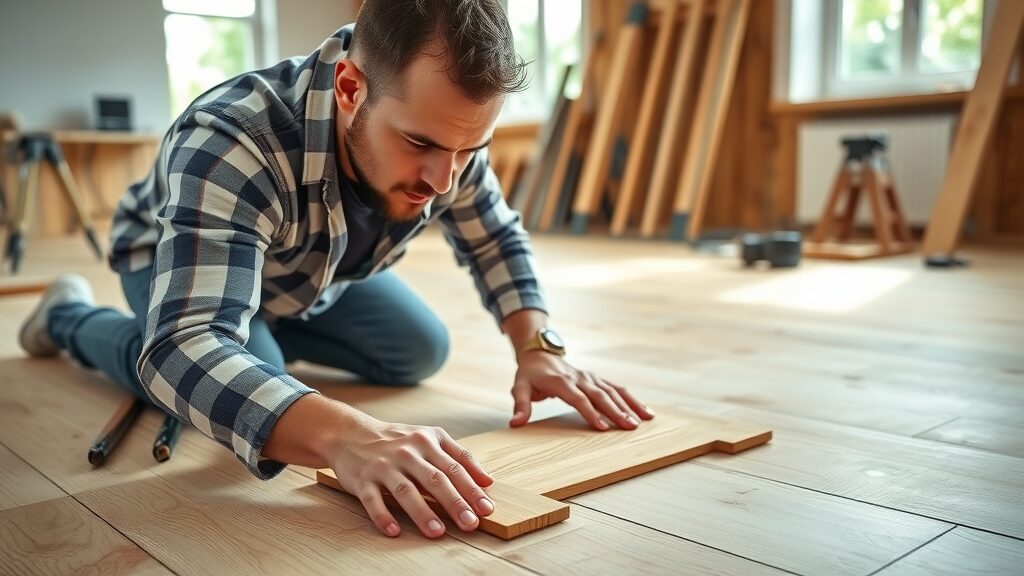
Installing a hardwood floor is a multi-stage project. First, the old flooring is removed and the subfloor prepared—cleaned, leveled, and dried. The wood planks, whether engineered hardwood or solid wood, are then acclimated to room humidity for several days to minimize expansion or contraction after installation. The installer meticulously lays out planks in a staggered pattern, affixing them via nails, staples, or adhesive depending on the subfloor type.
Each board is precisely measured and cut to fit around corners or doorways, with expansion gaps left around the perimeter to allow for seasonal movement. Once installed, the floor is finished—either with a prefinished topcoat or, for site-finished varieties, sanded and stained to your specifications. The entire process may span three to seven days, but the finished product is a seamless, enduring upgrade with decades of life ahead.
Carpet Installation Explained: Steps, Timeline, and Professional Tips
Carpet installation is designed for minimal disruption. After moving out furniture and removing old carpet, installers lay padding to create a comfortable base and extend the lifespan of the new carpet. Rolls or carpet tiles are then cut to size, stretched across the floor using a power stretcher, and fixed securely with tack strips around the room’s edge. Seams are expertly joined and edges tucked beneath baseboards for a polished finish.
Most carpet installations are completed within several hours for each room (depending on square footage), allowing you to quickly restore your space and enjoy immediate comfort. Professional tips include letting the new carpet air out to reduce “new carpet smell,” vacuuming after installation to remove loose fibers, and avoiding heavy furniture placement for 24-48 hours to ensure a smooth, resilient surface.
For intricate layouts or pattern-matching, specialists will ensure precise alignment for a visually pleasing result that stands the test of time. While DIY installation is possible for experienced homeowners, professional installation is strongly recommended for best results and warranty protection.
Cost Comparison: Is Carpet Cheaper Than Hardwood Flooring?
Budget is often the deciding factor in the carpet vs hardwood flooring quandary. While each material offers unique advantages, their cost structures unfold differently over time. Understanding upfront versus long-term costs can help you determine which approach truly delivers value for your space and lifestyle. Let’s break down the numbers so you can invest smartly.
Upfront Expenses: Carpet vs Hardwood Flooring Material Costs
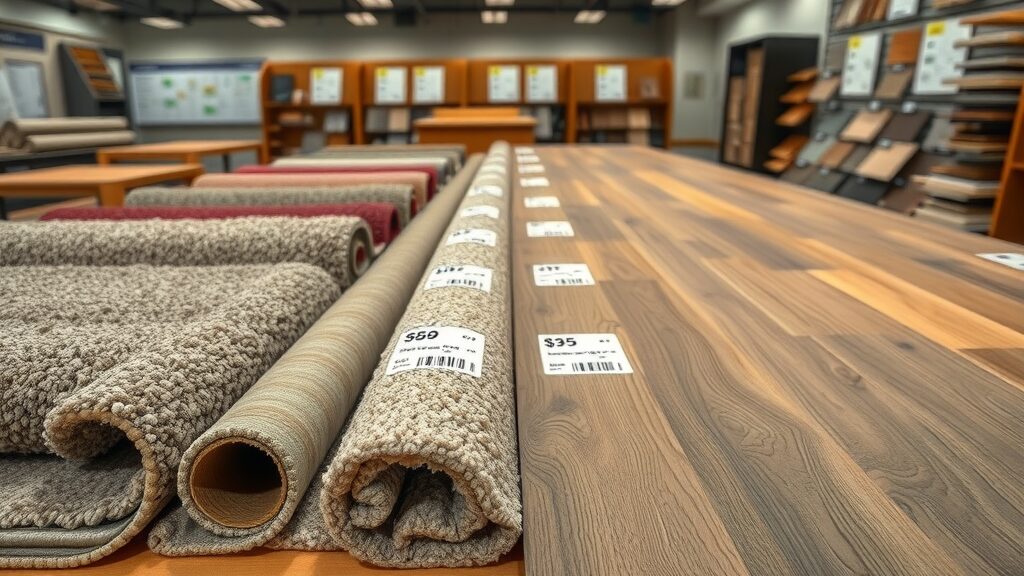
Carpet is famous for its low installation cost. Depending on quality and region, prices can range from $2 to $6 per square foot installed, including both padding and labor. This makes it attractive for quickly updating large areas or keeping renovation costs in check, particularly for secondary rooms or rental properties. Factors such as fiber type, pile height, and stain resistance will impact the overall price.
In contrast, hardwood flooring comes with a higher upfront price tag. Expect to pay $6 to $15 or even more per square foot for materials and labor, depending on the type of wood , plank width, finish, and installer expertise. Engineered hardwood can be slightly more affordable than traditional solid hardwood , yet both deliver a lasting upgrade whose value may offset the initial outlay over time.
When budgeting for your project, always account for underlayment, removal of old flooring, and any structural prep work. Quotes may vary, so get several estimates before moving forward.
Long-Term Value: Maintenance, Repairs, and Lifespan of Flooring Options
While carpet offers a low barrier to entry, it typically has a shorter lifespan—requiring replacement every 7-10 years in high-traffic zones. The costs of regular deep cleaning , stain treatments, and eventual replacement can add up, making carpet a more frequent but less durable investment for many households.
Hardwood, on the other hand, is a “buy it for life” material. Although the initial installation cost is higher, maintenance is relatively simple—routine sweeping and occasional refinishing. A well-kept wood floor can last 30 years or more, often looking better with age as the wood develops character. For resale, homes with hardwood almost always recoup their cost, with buyers prepared to pay a premium for this upgrade.
Ultimately, your financial decision should balance immediate affordability with long-term benefits, factoring in the total cost of ownership, not just the price per square foot on installation day.
- Pros and Cons of Carpet: Pros include comfort, warmth, noise reduction, lower initial cost. Cons are shorter lifespan, tendency to stain, and allergen collection.
- Pros and Cons of Hardwood Flooring: Pros include durability, timeless style, high resale value, and hypoallergenic surface. Cons are high initial expense and susceptibility to scratching in some cases.
- Factors impacting total cost include material grade, installation type, maintenance frequency, and the size or complexity of the space.
- Engineered hardwood offers similar visual appeal as solid planks but with increased stability and often lower material cost—making it a smart comparison point with both traditional hardwood and carpet.
People Also Ask About Carpet vs Hardwood Flooring

Which is better, carpet or hardwood floors?
The answer depends on your household needs: hardwood floors offer durability and increased property value, making them ideal for resale and allergen control. Carpets , meanwhile, provide warmth and coziness, especially suited for bedrooms or low-traffic areas.
Do houses sell better with carpet or hardwood floors?
Homes with hardwood floors typically have higher market appeal and may sell more quickly. Buyers view hardwood as a premium flooring option, often favoring it over carpet for main living spaces.
Is it cheaper to put down carpet or hardwood floors?
Carpet is generally cheaper to install, but hardwood floors deliver greater long-term value through lasting durability and better resale potential, sometimes offsetting higher initial costs.
What adds more value, carpet or hardwood?
Hardwood flooring almost always adds more value to a home compared to carpet, as it suits a greater variety of tastes and is prized for its longevity and timeless appearance.
Expert Answers to Common Questions About Carpet vs Hardwood Flooring
How do wood floors compare to engineered hardwood?
Solid hardwood floors are crafted from single pieces of wood and can be refinished many times, lasting for generations. Engineered hardwood features a thin veneer of genuine wood over layers of composite, giving it greater stability against moisture and temperature changes while maintaining an authentic wood look. Both options offer superior durability to most carpets, but engineered is often easier to install and less expensive.
Can you mix carpet and hardwood in the same space?
Absolutely. A popular trend is to use hardwood flooring in main pathways and living areas, then install carpet in bedrooms or on stairs for added comfort. Using coordinated area rugs can create visual harmony between different surfaces, giving each room its own defined purpose and style.
What are the best cleaning and care tips for both flooring options?
For hardwood , dust or vacuum regularly and mop sparingly using a cleaner formulated for wood. Protect against scratches by using felt pads under furniture. For carpeted floors , vacuum often, tackle spills immediately, and schedule regular deep cleaning —either steam or professional shampooing—for best results. Both benefit from prompt attention to stains and minimizing dirt tracked in from outside.
Are there eco-friendly options for both carpet and hardwood flooring?
Yes—look for carpets made from recycled materials or natural fibers like wool, and wood flooring certified by the Forest Stewardship Council (FSC) for responsible sourcing. Bamboo and cork are sustainable alternatives offering durability and unique style, while synthetic fibers made from recycled plastic bottles are increasingly available in modern carpets.
Which flooring option works best for pets?
Both can work for pet-friendly homes, but hardwood flooring —especially with a durable finish—repels odors, dander, and sheds fur easily. However, some pets may scratch softer wood surfaces over time. Stain-resistant carpets and patterned area rugs offer comfort for lounging pets, but require diligence against accidents and hair. Consider your pet’s habits and choose appropriately.
Final Thoughts: How to Choose the Right Flooring Option for Your Home
“Your choice between carpet vs hardwood flooring should reflect both your style and your household’s practical needs—never underestimate the impact of flooring on how you experience your home.” – Hometown Floors Designer
Make Your Flooring Decision with Confidence: Discover More or Speak to a Pro
Have questions about your flooring project? Speak with a friendly pro—call at (636) 244-4951 or browse our work atwww.hometownfloorsonline.com.
When deciding between carpet and hardwood flooring, it’s essential to consider factors such as durability, maintenance, comfort, and impact on home value. To assist you in making an informed choice, here are two authoritative resources that delve deeper into this topic:
- Hardwood vs. Carpet: Differences, Pros, and Costs – Forbes Home
This comprehensive article from Forbes Home explores the key differences between carpet and hardwood flooring, including aspects like maintenance, lifespan, and cost considerations. It provides valuable insights into the pros and cons of each option, helping you weigh the benefits in relation to your specific needs.
- Carpet vs. Hardwood Flooring: Which Is Better for Your Bedroom and Home? – HomeAdvisor
HomeAdvisor offers an in-depth comparison focusing on factors such as resale value, moisture resistance, and suitability for households with pets or allergy sufferers. This resource is particularly useful for understanding how each flooring type aligns with different lifestyle considerations.
By exploring these resources, you can gain a more nuanced understanding of how carpet and hardwood flooring options align with your lifestyle, budget, and long-term home goals.

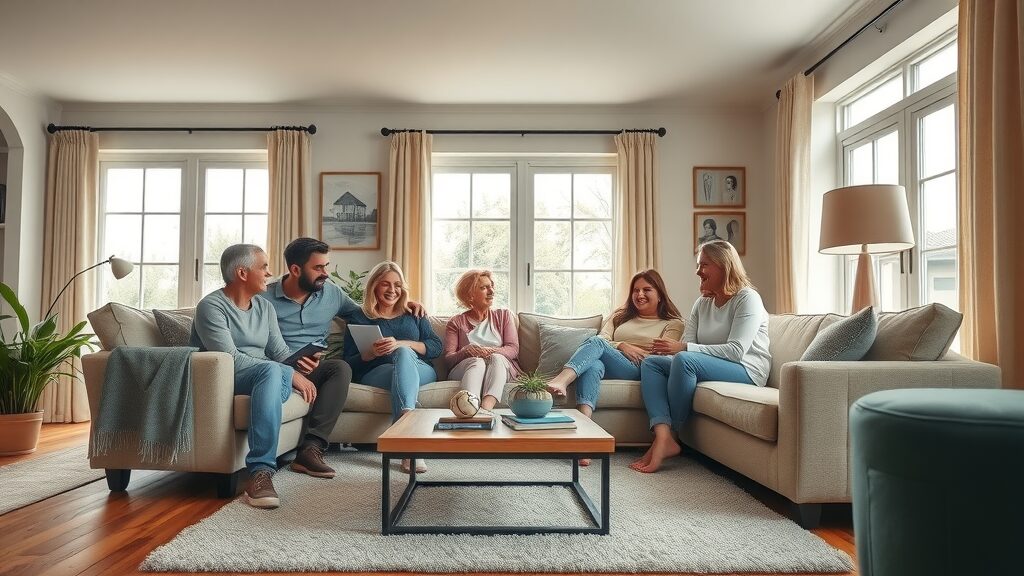
Leave a Reply